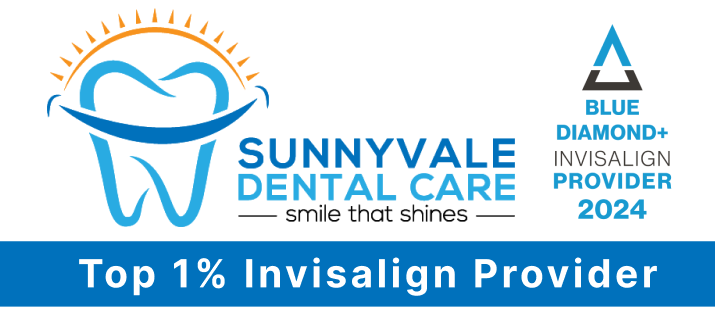Treatments of Gum Recession
- The Free Gingival Graft
- The Lateral Graft
- The Sub-Epithelial Connective Tissue Graft
The Free Gingival Graft
The Free Gingival Graft is a procedure where a thin piece of gum tissue is removed from the roof of the patient's mouth and transplanted to another site in order to create thick tough tissue or "attached gingiva". In some cases, this type of gum graft can only prevent further recession, which is all that is necessary to keep the tooth or teeth healthy. In other cases, this type of gum graft can partially or almost completely cover previously existing recession.
The donor site (the roof of the mouth) will heal without damaging the underlying gums,bone or teeth. In some cases, a freeze-dried human tissue product can be used in order to avoid taking the tissue from the roof of the mouth.

Pre-Treatment
This recession is not only unsightly but is also infected since she can't clean these thin, fragile tissues properly.

Post-Surgical
After the gum graft has been done, you can see that the root has been partially covered. It is more difficult to cover roots if multiple teeth are involved.The Lateral Graft
The lateral graft is also called a "pedicle" graft since the gum tissue is raised from the area immediately lateral, or adjacent, to the area of recession. In order to do this, there must be an abundant amount of thick, tough, "attached gingiva" lateral to this area of recession. This is frequently not the situation in many cases of recession. This "pedicle" of gum tissue is then rotated over the area of recession in order to attempt to cover the recession, as well as create a thick band of "attached gingiva" which will prevent further recession. A limitation of this procedure is that there can be some recession occuring from where the "pedicle" was moved from.
Pre-Treatment
The patient is unhappy with this recession which is readily visible to her and others.
Artist's Depiction
The artist's drawing shows from where the "pedicle" flap will originate.
Artist's Depiction
The artist's drawing shows how the "pedicle" flap will be rotated over in order to cover the recession.
Post-Surgical
The final healed result has created a good cosmetic result while also preventing further recession and diseaseThe Sub-Epithelial Connective Tissue Graft ("Sub-Epi Graft")
The sub-epithelial connective tissue graft is a procedure that is designed to: 1. Cover Recession (when a lateral "pedicle" graft can't be done) 2. Re-Construct Areas of Bone Loss or Bone ResporptionCover Recession
When there is not enough thick tissue next to an area of recession and a lateral graft can't be done, the "Sub-Epi" graft can be done. This usually uses a piece of gum tissue taken from the roof of the mouth but from under the superficial, surface gum tissue. An option, in some cases, is to use a "man-made" membrane instead of taking any tissue from the roof of the mouth. In the surgical procedure, the gum tissue or "man-made" membrane is placed over the root of the tooth. A flap of gum tissue is raised from the base of the recession in order to cover the gum tissue or membrane -- in order to provide a blood supply to the graft. This creates the potential to create healthy, tough tissue and also create a better cosmetic result.
Pre-Treatment
This tooth has severe recession that is very unsightly.
Artist's Depiction
The "drawing" shows where a flap of tissue will be raised to cover the graft.
Artist's Depiction
This drawing shows the gum tissue or the membrane (shaded blue for contrast) placed over the root.
Artist's Depiction
This drawing shows how the flap from the base of the recession is now covering the graft.
Post-Surgical
The healed result has covered the root and created a pleasing appearance.Reconstruct Areas of Bone Loss or Bone Resorption
When some of the upper front teeth are removed (usually if a tooth fractured or a root canal failed), there may be the excessive loss of bone from where the tooth came out. This can leave an unsightly, or even ugly "depression" in the gum tissue. Too often, when a "dummy" tooth is replaced into the mouth, this "depression" requires the "dummy" or replacement tooth to be too long and unsightly. Before the replacement tooth is to be made, the "Sub-epi" graft should be done in order to reconstruct this deformed area. The result will be a more natural looking tooth and a happier smile.
An Unsightly Result
This is a bridge with a very poor appearance. This long replacement tooth could have been avoided with a "Sub-epi" graft.
Pre-Treatment
The "dummy" tooth on her partial denture has an ugly, discolored plastic extension protruding into the area of bone loss.
Pre-Treatment
With the tooth taken out, you can see how the plastic extension has "dug" into the gum tissue. A "Sub-Epi" graft will be placed under this depression in order to "plump-out" the gums.
Post-Surgical
This shows the reconstructed area. The gum has been built-out as a result of the "Sub-epi" graft being placed under the gum to "bulk-out" this area.
Post-Surgical
To learn more about Perio Protect™, a device that helps in treating gum disease, click here.
Learn more when you visit Sunnyvale Dental Care office. Call Sunnyvale periodontist Dr. Gupta at 408-720-0900 to schedule a consultation today!

